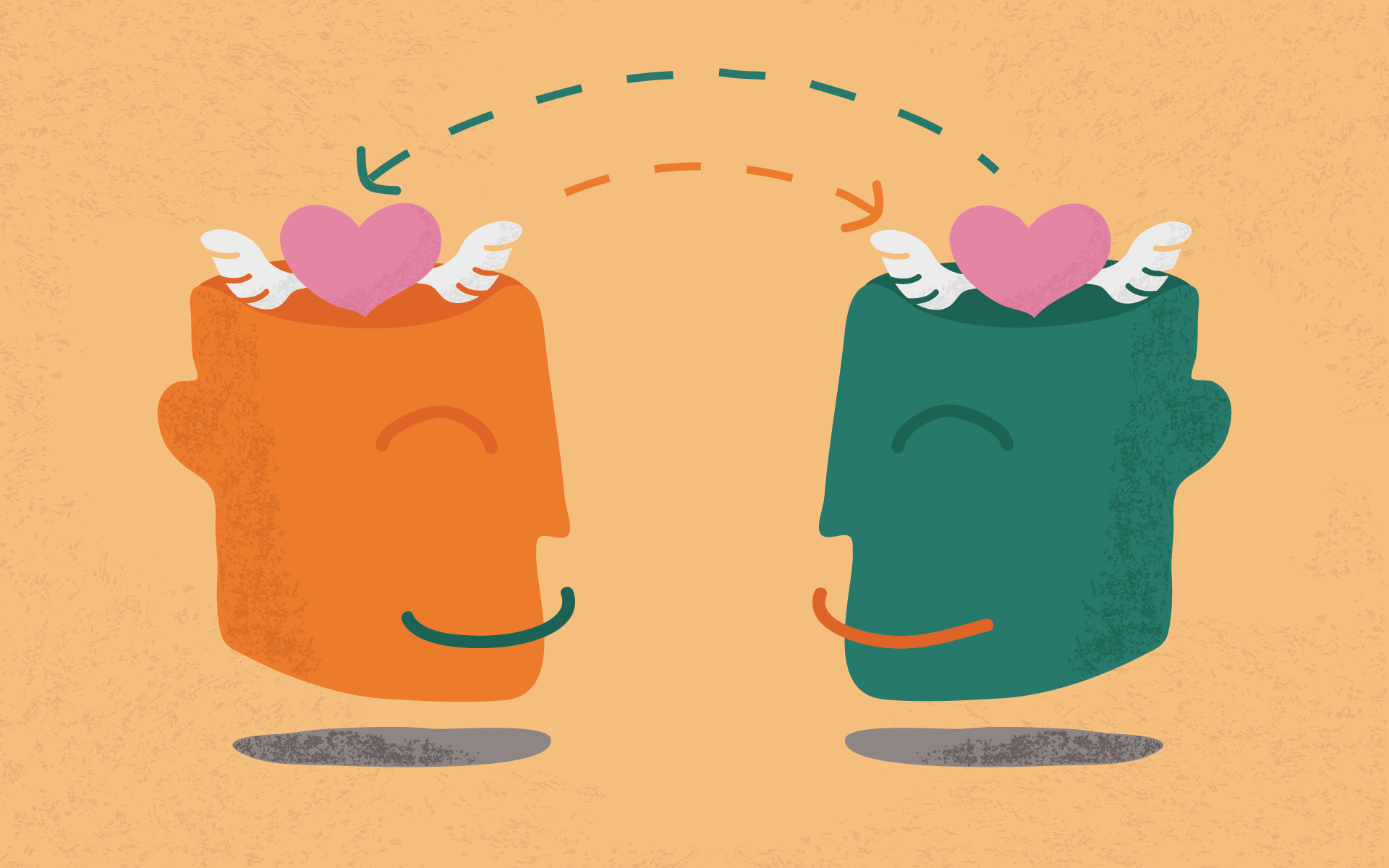Loving-kindness practices seem to be all the rage these days, but do they really make a difference in the world? Does mentally extending compassion to others and wishing them free from suffering really increase kindness in the real world?
I decided to take a look at the research on loving-kindness so I could answer that question for myself.
One study I found, published online by Psychological Science,shows that training adults in a loving-kindness-style “compassion meditation” actually makes them significantly more altruistic toward others.
The study suggests not only that it’s possible to increase compassion and altruism in the world, but that we can do so even through relatively brief training in compassion practice. What’s more, the study is the first to link compassion practice with measurable changes in brain activity, shedding light on why compassionate thoughts may actually lead to compassionate deeds.
“We really wanted to show that compassion is a skill that you can work on, like exercise or learning a musical instrument,” says the study’s lead author, Helen Weng, who is now a clinical psychologist and neuroscientist at the University of California, San Francisco.
Understanding the Science of Loving-Kindness
In the study, Weng and her colleagues gave participants one of two trainings. In both trainings, the participants listened to a 30-minute audio recording on their own once a day for just two weeks.
One was the compassion meditation. The compassion meditation gently instructed the participants to extend feelings of compassion toward different people, including themselves, a loved one, a casual acquaintance, and someone with whom they’d had difficulty. The researchers call the other audio recording a “reappraisal training” because it involved recalling a stressful experience and trying to think about it in a new, less upsetting way, such as by considering it from another person’s point of view.
Before and immediately after each two-week training, all participants had their brains scanned in an fMRI machine while they looked at a series of images, some of which depicted people in pain, such as a burn victim or a crying child.
The study is the first to link compassion practice with measurable changes in brain activity, shedding light on why compassionate thoughts may actually lead to compassionate deeds.
The participants then played an online game designed to measure their altruistic behavior. In the game, they were given $5, another player was given $10, and a third player had no money. Each study participant first watched as the player with $10 was asked to share some of his money but gave only $1 to the penniless player, who the researchers refer to as the “victim.” The participant could then choose to spend any amount of his $5; whatever he spent would have to be doubled by the wealthy player and given to the victim. So if the participant was willing to part with $2, the victim would receive $4 from the other player.
Would people who received the compassion training be more willing to spend their money in order to help a stranger in need? They were—in fact, they spent nearly twice as much as people who received the reappraisal training, $1.14 vs. $0.62.
How Loving-Kindness Changes the Brain
It’s important to note that, during the game, participants weren’t instructed to think about anything they’d learned during their training. Yet that brief daily meditation still seemed to have a strong carry-over effect on their behavior.
“This demonstrates that purely mental training in compassion can result in observable altruistic changes toward a victim,” the researchers write in their paper, “even when individuals are not explicitly cued to generate compassion.”
And these changes were also reflected in changes to brain activity. Specifically, when compared with their brain activity before the training, people who received the compassion training showed increased activity in neural networks involved in understanding the suffering of others, regulating emotions, and positive feelings in response to a reward or goal.
People who received the compassion training showed increased activity in neural networks involved in understanding the suffering of others, regulating emotions, and positive feelings in response to a reward or goal.
The researchers saw similar brain changes in the reappraisal training group, but that brain activity didn’t translate into altruistic behavior. To explain this, the researchers propose how the interaction between the training, brain activity, and behavior may have differed between the two groups.
They point out that a heightened sensitivity to suffering causes people to avoid that suffering because it doesn’t feel good; however, because the compassion training also seemed to strengthen the brain’s ability to regulate emotions, people may have been able to sense suffering without feeling overwhelmed by it. Instead, the care for others emphasized by the compassion training may have caused them to see suffering not as a threat to their own well-being but as an opportunity to reap the psychic rewards from achieving an important goal—namely, connecting with someone else and making him feel better.
“When your goal is to help another person, then your reward system will be activated when you’re meeting that goal,” says Weng.
By contrast, the reappraisal group’s goal was to decrease their own negative emotions, making them less inclined to be altruistic when confronted with someone else’s pain. “When you’re focused on decreasing your own negative emotions,” she says, “I think that makes you less focused on other people.”
Can Compassion Be Learned?
This study follows prior research documenting the positive effects of other compassion training programs, such as the Compassion Cultivation Training developed at Stanford University and the Cognitively-Based Compassion Training out of Emory University. Another study published in Psychological Science suggests that training in mindfulness meditation significantly increases compassionate behavior.
But this Dr. Weng’s study is noteworthy for several reasons. For one thing, many of the previous studies have examined trainings that took several hours a week for at least eight weeks; this study’s compassion training, by contrast, took just a total of seven hours over two weeks.
Also, prior studies of compassion trainings have mostly looked at their effects on brain activity, emotional well-being, or physical health. But this is the first study to both examine “whether training in compassion will make you more caring and helpful toward others,” says Weng, and then document how “those changes in behavior are linked to changes in neural and emotional responding to people suffering.”
Weng says she’s excited by the implication that people can develop significantly more compassion and altruism, even outside of a training like the one she helped to create.
“Our findings support the possibility that compassion and altruism can be viewed as trainable skills rather than as stable traits,” she and her co-authors write. “This lays the groundwork for future research to explore whether compassion-related trainings can benefit fields that depend on altruism and cooperation (e.g., medicine) as well as clinical subgroups characterized by deficits in compassion, such as psychopaths.”
This article originally appeared on Greater Good, the online magazine of UC Berkeley’s Greater Good Science Center, one of Mindful’s partners. To view the original article, click here.
Read More
A Beginner’s Loving-Kindness Practice
Follow this simple loving-kindness practice to open the heart and mind towards a greater sense of compassion.
Read More
Sharon Salzberg: Connect with Kindness
Feeling disconnected? Try this loving-kindness practice.
Read More










